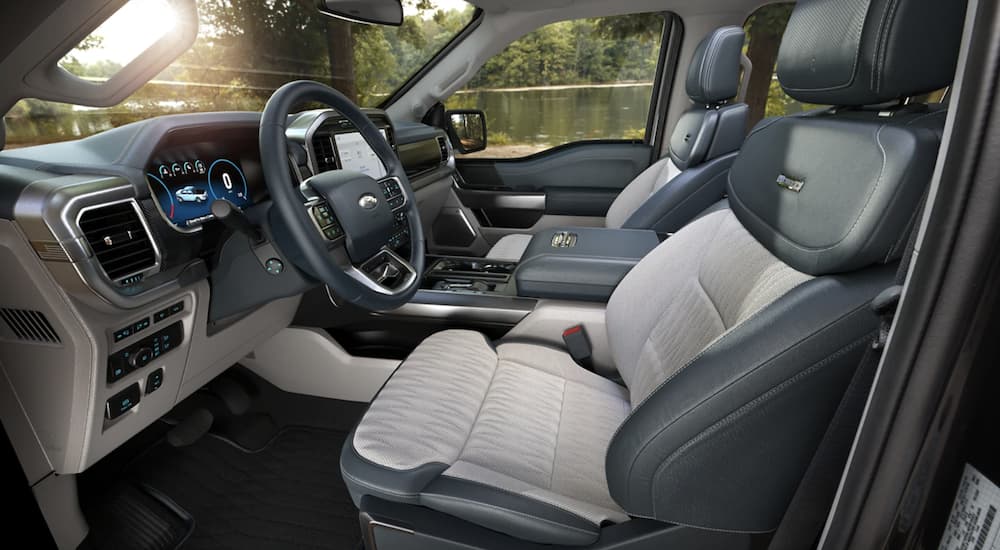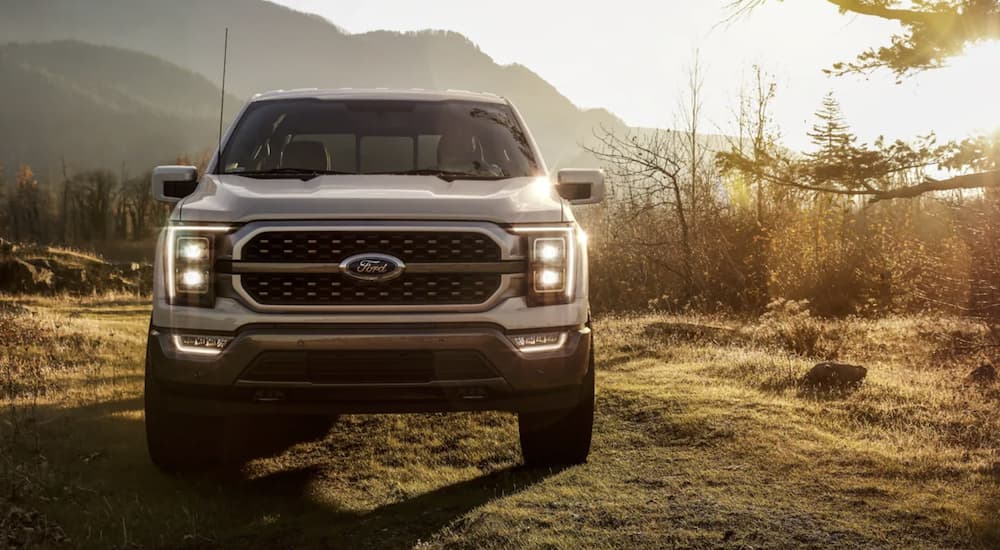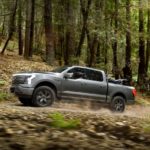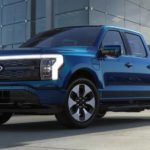With the news that Ford will be introducing its all-electric 2022 Ford F-150 model this year, I got curious about how long they have been working towards this moment and where they hope to go in the future. There are rumors going around that we will see over a dozen all-electric Ford models by 2025, but that remains to be seen, especially with shortages and shipping issues. However, we can take a look at where Ford began experimenting with hybrids and all-electric vehicles to ascertain what sort of things to expect from them in the very near future.
I remember when my family got our first Ford, the F-150 XL extended cab, in the late 1990s. It was a gorgeous shade of blue with a purple tinge to it, with two bench seats and a cover for the truck bed. All six of us and our instruments fit well enough for a comfortable ride to whatever function we were playing––weddings, holiday events, parties, historical re-enactments, etc. My father drove that truck for several years, from state to state on the East Coast, and it is part of many of my fond memories. If you’ve ever had a Ford F-150 pickup, you know that feeling of fondness, coupled with pride at how well the truck performs even at an older age, and appreciation of the design and components that make it such a popular, versatile truck. I am hopeful that one day, my dad will be able to try out the all-electric version and be able to enjoy having a pickup again.
Henry Ford and Thomas Edison’s Electric Vehicle: Early 1900s
Thomas Edison and Henry Ford were friends, both eager to work on producing vehicles of the future for their many fans. Just after 1900, Edison began working on a way to allow vehicles to run on a battery, and a decade later, his friend Ford would begin working in earnest to design and produce an inexpensive electricity-powered vehicle. The earliest designs mimicked the Model T and were not much more expensive.
These electric vehicles also had something the gasoline-powered cars didn’t: an easy way to start. At the time, gas-powered vehicles were started by a hand crank, which often required a lot of muscle. The electric vehicles, on the other hand, were easy to start, didn’t smell, and were good for the environment while also being easier to operate for people who weren’t as physically inclined as the more muscular drivers.
Unfortunately, gas-powered vehicles began to overcome the difficulties of getting started, and Edison didn’t go any farther with the electric vehicle design. We could have had this option for over a century now, except that progress drove us towards the smellier, more harmful option. It wouldn’t be until the 1950s that interest in battery power would be resurrected, and the electric vehicle given another chance to shine.
Four Decades Later, The Battery Becomes Relevant Again
In the 1950s, people began to be concerned with environmental issues once again, leading to car manufacturers looking for ways to be more eco-friendly and conscious about what they were putting into the air and water. This led to the resurrection of the battery-powered car, and soon a whirlwind of activity resulted in promises to provide electric cars that could go longer distances before needing to recharge. The end of the 1960s saw the arrival of the Ford Comuta Mini-Car, but for some reason, the progress made dried up, and by the late 1970s, Ford’s leaders were skeptical that there was a market for such a thing, and it quietly disappeared again.
The 1990s Bring Forward More Environmental Concerns and Two Ford EV Models
With the need to lower emissions in order to combat climate change, people once more looked to the electric car as a viable candidate for everyday transportation. Eventually, Ford decided to release two all-electric models, the electric Ford Ranger pickup and the Norwegian-based Think City microcar. At the end of the 1990s, there was a bit more competition, though not enough sales for Ford to keep their Think City model. The Ford Ranger fared better, gaining popularity with government officials who bought fleets of Rangers before it was discontinued in the early 2000s.
With 30 more miles of range, the pickup was able to go without a recharge for around 80 miles total, which signaled that the electric technology was getting better, even if it was slower to catch on. Unfortunately, the early 2000s were unkind to many, and the Ranger, which hadn’t sold even 2,000 units in four years, was done for. It was retired, and people went back to their gasoline-powered vehicles wondering if we would ever get to see, test drive, or buy an all-electric vehicle in our lifetime. Fortunately, Ford never quite gave up, and in the 2000s and 2010s, we began to see the rise in popularity of hybrids as well as all-electric vehicles.
Toyota’s Prius Starts the Race to Electric Power Over Again
Yes, we’ve all joked about the Prius at one point or another, but the fact remains that Toyota’s hybrid vehicle has done quite well for itself over the past few decades. This has resulted in, yet again, stiff competition between vehicle manufacturers as it becomes clear that completely gas-fueled vehicles will not be as viable in the future and that we may indeed come to rely on other energy sources when fossil fuels become scarce. The hybrid vehicle options nowadays are plentiful, ranging from the aforementioned Prius to the Chrysler Pacifica to the Hyundai Santa Fe to the Ford Escape, among others. Now people are putting their heads together to figure out how to move from hybrid models to the all-electric goal that was put in place in the early 1900s. Over one hundred years later, we are just now beginning to see the desire to help the environment and provide quality, long-lasting vehicles that can go between 100-200 miles before needing to find a charging station.
The Ford Focus Electric was one step forward for Ford, introduced to the world in 2009. With a liquid-cooled battery, it would work the same year-round, no matter the temperature or inclement weather, and it also drove like gas-powered cars, which had been an issue with other models, which tended to be clunky, oddly designed, and low in power. Priced at less than $30,000, the Ford Focus EV managed to get around 115 miles per charge, but ultimately, the same issues that plagued earlier versions wormed their way into this model, and Ford shelved the vehicle in 2018. Less than 10,000 Focus EVs were sold, and executives believed that there was just no way anyone would be interested in the EV option. There hadn’t been many fans before, even when Henry Ford was in charge. What was it going to take to promote an EV in a way that would ensure its success in dealerships across North America?
What the Future Holds
Now that we are once again faced with mounting issues regarding fossil fuel reserves, climate change, and soaring prices, Ford has yet again brought out its electric vehicle ideas and promised to offer nearly half of its vast catalog with an electric or hybrid option. The new wing of Ford’s electric division, Team Edison, is now in full force, reaching towards its goal of being able to offer over 15 all-electric vehicles to consumers. The Ford F-150 is among these new electric models, which makes a lot of sense considering it is the best-selling vehicle in the US and has held that title for nearly forty years.
With such a long legacy of introducing hybrid and electric vehicles into the market, Ford is poised to become not only the North American standard in electric vehicles but the global standard as well. I’m looking forward to seeing more and more all-electric options become available for consumers as we all take part in promoting more eco-friendly, green options for transport to ensure we can keep going, keep innovating, and keep driving for centuries to come.






